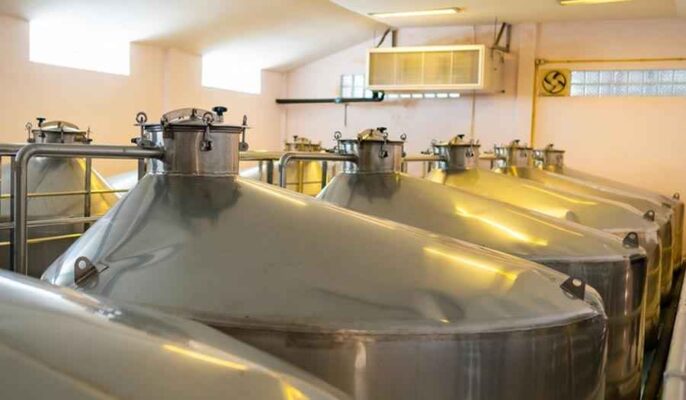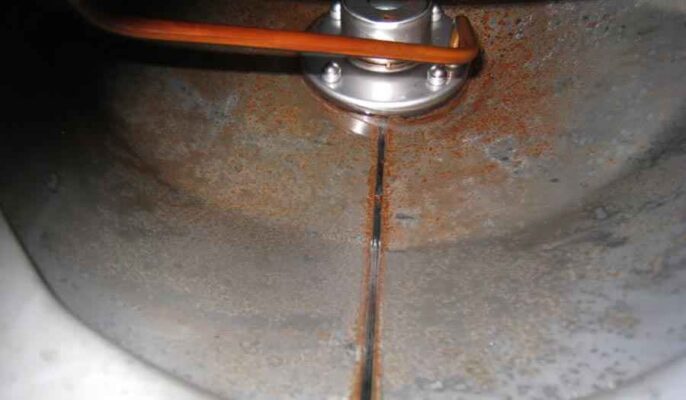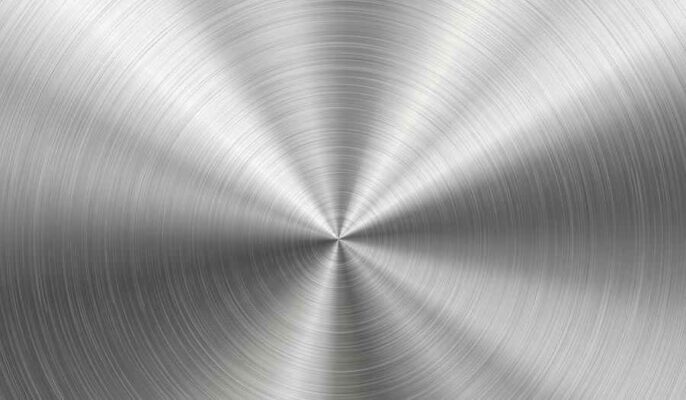It is very common to use high-grade stainless steel for brewing equipment. Craft brewer, home brewer, winery, or distillery, and know that it is important to “passivate” your tanks and equipment. Quality is important to you, so doing things the right way is also important. Although stainless steel is hailed as the perfect metal for beer brewing, it can corrode or rust.
Stainless steel and rust-proof
The chromium in stainless steel reacts very with oxygen and actually forms a protective layer of chromium oxide on the surface of the steel. This chromium oxide prevents rust and corrosion. But, if the chromium layer is damaged for any reason, the iron in the steel may actually begin to corrode and rust.
Stainless steel brewing equipment is generally very corrosion-resistant. But, the protective layer may wear away if it is exposed to bleach or other bleach-based cleaners, scratched, scrubbed, or exposed to non-stainless steel scouring pads (such as steel wool) or brought into contact with regular steel.

What is tank passivation?
The brewing process is a chemical treatment of stainless steel. Today, most brewing tanks are made of stainless steel. The purpose is to create an invisible layer or coating on the inner tank wall so that the metal is protected from corrosion and pitting caused by:
- Cleaning chemicals (acids, corrosives and disinfectants)
- Carbon dioxide and beer
- Chlorides (such as salt) are very hard on stainless steel
- Beer with low pH value
- There are other causes of corrosion, but these are the main ones. Before we delve into passivation, we need to look at descaling/pickling.
What is descaling and pickling?
Rust removal and pickling should not be confused with passivation. With older tanks, you will have sediment buildup that will need to be removed (oxide removal). Before we discuss how to passivate your brewing vessel, you must first clean the exposed metal to ensure successful passivation.
Traditional passivation
Both chemicals were often used in this old method. They are citric acid and nitric acid. Citric acid is a mild organic acid that is good at chelating iron but does not leave a protective layer on its own to protect your tank. Using citric acid can leave your tank vulnerable to chemical attack when you further clean it after use. Brewers most often choose to use nitric acid when passivating tanks.
The main problem with this method is that the layer is not permanent and does not usually repeat in the brewery. Due to the dangers involved in using nitric acid at such dangerous concentrations. You will need to passivate your tank using the above method at least twice a year. The new methods we describe below will help keep your tank clean and in top condition.
Conversion coating passivation
To most brewers, the idea of cleaning with an acid first and then an alkaline cleaner may seem counterintuitive. used methods are alkali cleaning, rinsing, pickling and final rinsing of the tank. This method is very effective at removing proteinaceous dirt, but is less effective at beer stone and does not passivate the metal over time. Over time, the result is soil buildup and microbial corrosion (MIC) of metals. If this continues, it can lead to pitting of the metal and put you at a higher risk of infection. Because it is more difficult to clean and disinfect the tank .
What if chemical passivation is not performed?
Then you’re not doing everything you can to brew the best beer possible. We know that for most brewers, purchasing stainless steel equipment is an investment in brewing the best beverages possible. We recommend this step to help ensure that your gear is cared for and will last for a long time.
When should passivation be performed?
For new devices, a lot depends on where the device comes from. High-end equipment is often soaked in nitric acid during one of the last steps in production and may only must a good cleaning to remove oil residue before first use. Either way, a thorough cleaning is required to remove oil, polish, and other contaminants that can ruin your beer. The extra step of passivating it after cleaning is not expensive since stainless steel equipment is expensive and lasts a lifetime. Also, if you brew , it’s not a bad idea to passivate it every other year as a preventive measure.


How to passivate a brewing vessel?
- Remove any unwanted oil, dirt and debris left behind while working on the fuel tank.
- You can then drain the fluid and rinse immediately. Perform a visual inspection to make sure all unwanted dirt has been removed. If dirt remains, repeat step 1.
- When no dirt remains, you can perform citrus acid CIP. If you see any signs of surface rust. Make up a 2% solution and recirculate through the spray ball at 120-130F (50-55C) for 15-30 minutes. Then rinse well.
- After rinsing with citric acid, you can start CIP using a phosphoric acid/nitric acid mixture, followed by a non-corrosive cleaner using the method described below.
Container passivation
- Rinse container with ambient to warm water.
- CIP using 2% nitric acid/phosphoric acid mixture solution at 120-130°F (50-55C) for 15-30 minutes.
- Empty the container, but do not flush the water tank.
- Use 2% phosphate, silicate and oxidizing non-caustic acid cleaner solution, CIP for 15-30 minutes at 120-140°F (50-60C).
- Rinse until the pH of the rinse water is neutral.
- Passivation of the tank is now complete.
Summarize
Keeping your tanks passivated helps your beer perform at its best. Doing an acid clean, draining but not rinsing, and then immediately doing an alkaline clean is what metallurgists call a phosphate/silicate coating. This passivation technique differs from the high-concentration nitric acid method, which leaves a chromium oxide layer on the metal. The phosphate/silicate coating method provides some passivating properties without the use of high concentrations of chemicals and saves time by eliminating the need for 24 hours of air drying. It’s safer, simpler, and will keep your tanks clean and passivated.




